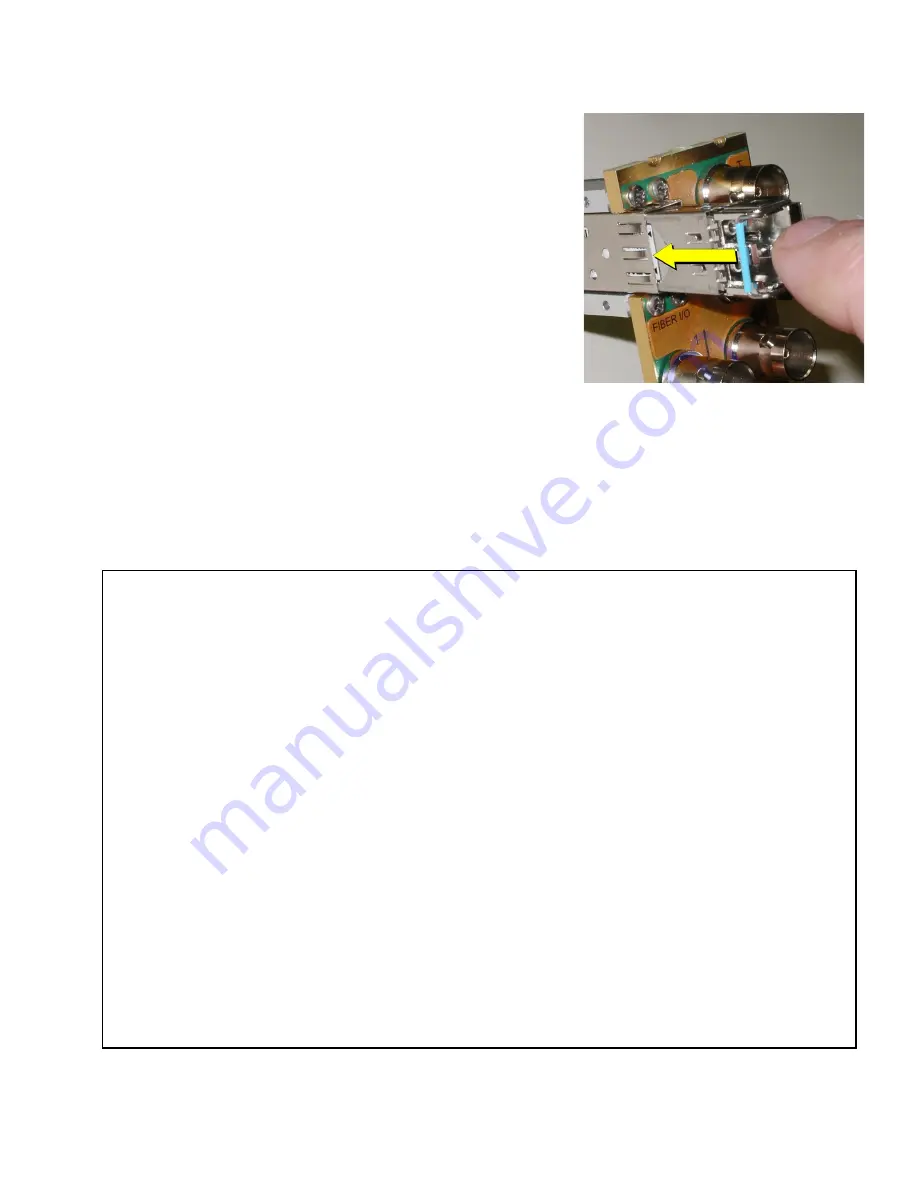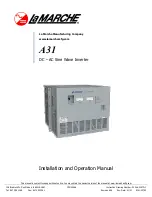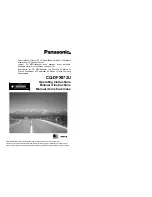
GUIDE TO INSTALLATION AND OPERATION
FIO-1901-R |
21
3. Slide the module straight into the socket, and push gently until it
clicks into position.
Connecting the fiber optic cables
1. Remove the dust plug from the SFP module if present
2. Verify that both the exposed end of the optical fiber in the LC connector and the fiber stub within the SFP
module are clean
•
Carefully remove any debris if necessary – see the note below.
3. Plug the LC-terminated fiber optic cable into the SFP module
Keep the connection clean!
The physical interface between two optical fibers is the critical point in a fiber system. The two fibers must
be accurately aligned – that’s the job of the connector plugs and bulkheads – and be in intimate contact
with no obstructions. That’s the job of the user. The small size of the fiber, and the even smaller size of
the fiber core, means that even common dust particles can seriously impair the transfer of light from one
fiber to another.
There are a variety of cleaning solutions available to help the fiber user maintain good fiber network
performance. For best results, it should be possible for the user to perform a visual inspection of the fiber
ends to verify cleanliness.
Miranda strongly urges all users to select a cleaning method that meets their needs, and to use it
rigorously and consistently.
A few tips:
•
Always use a dust plug in an empty fiber receptacle, to keep airborne particles from settling on the
fiber end
•
Keep your dust plugs clean – a sealed container is a must.
•
Always follow the instructions carefully when cleaning – abrasions on the fiber ends can degrade
system performance significantly
•
A visual inspection will ensure that particles and liquid residue have been removed
•
If it’s still dirty, clean it again.


































